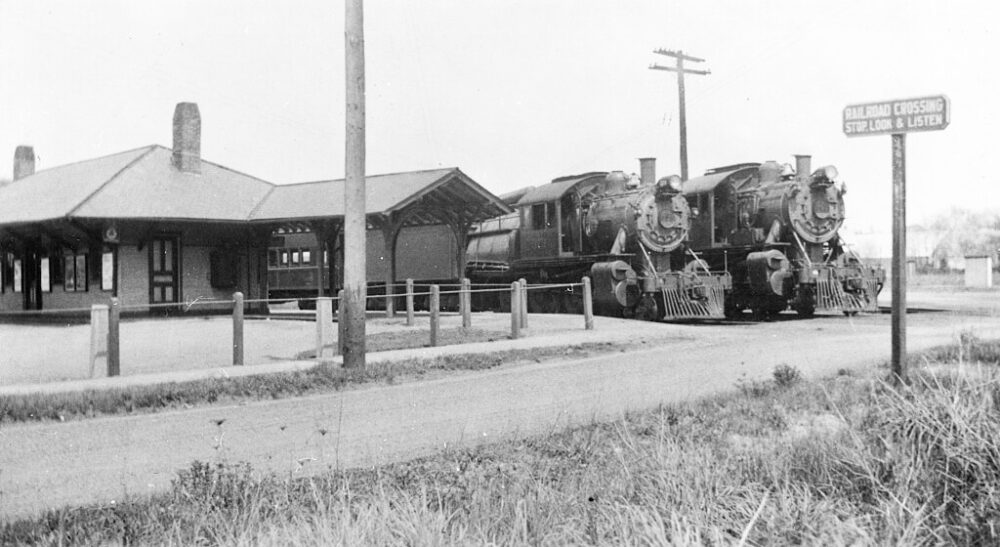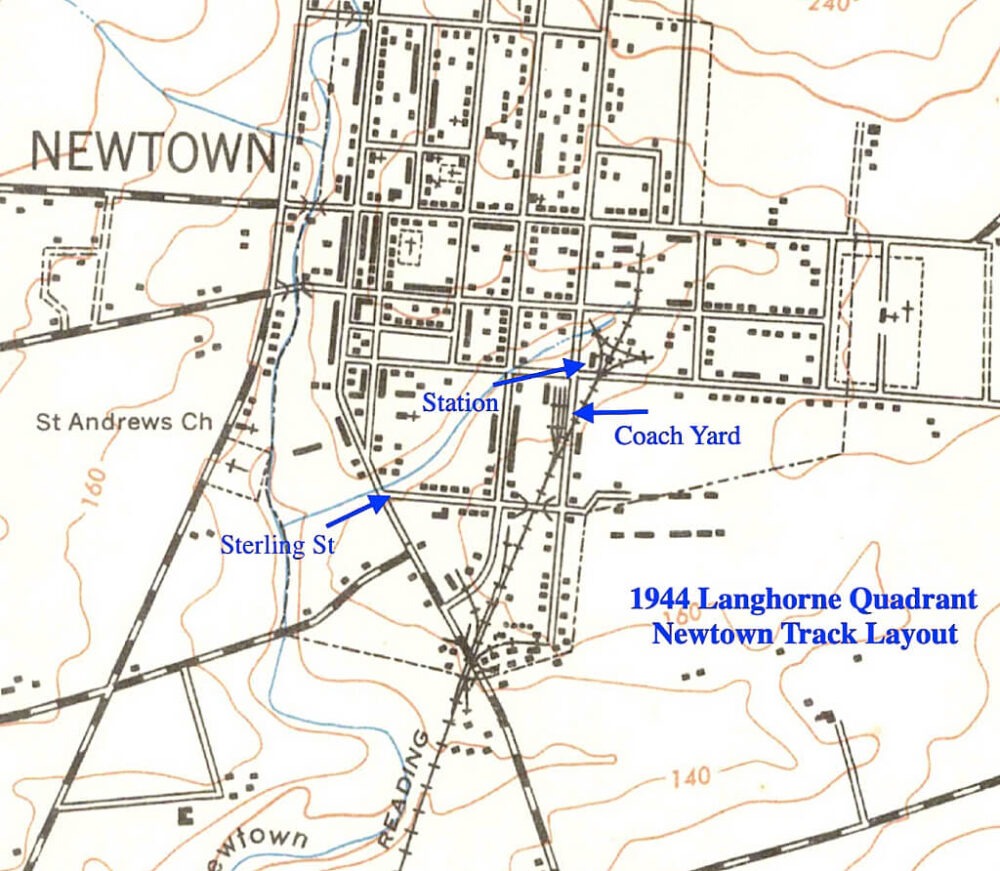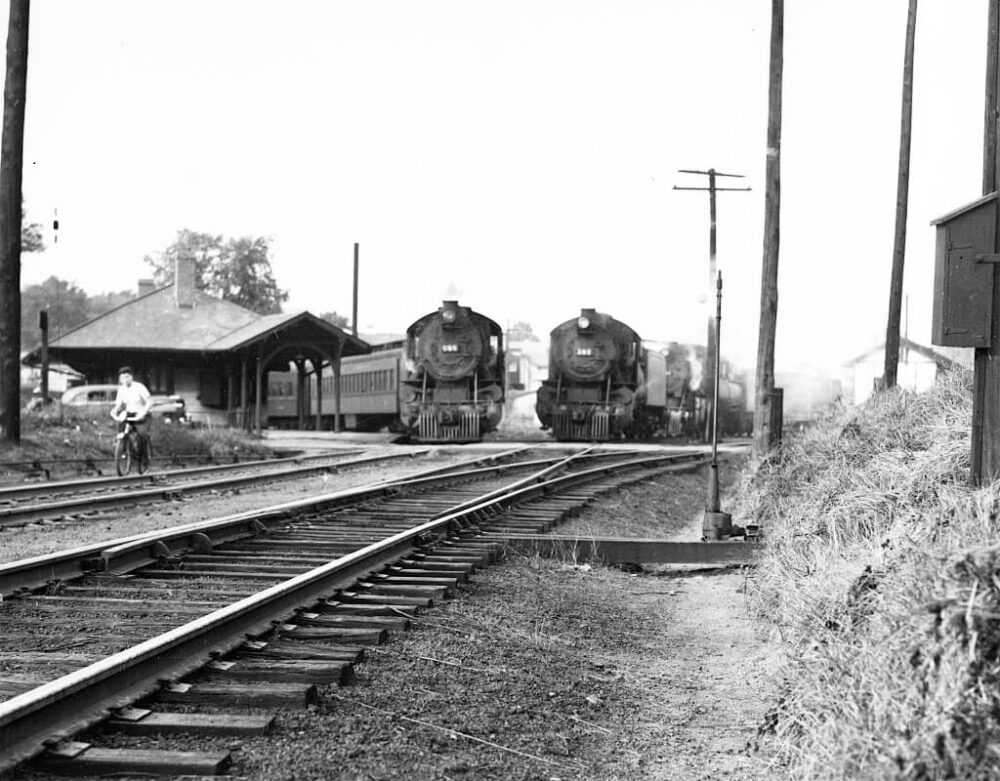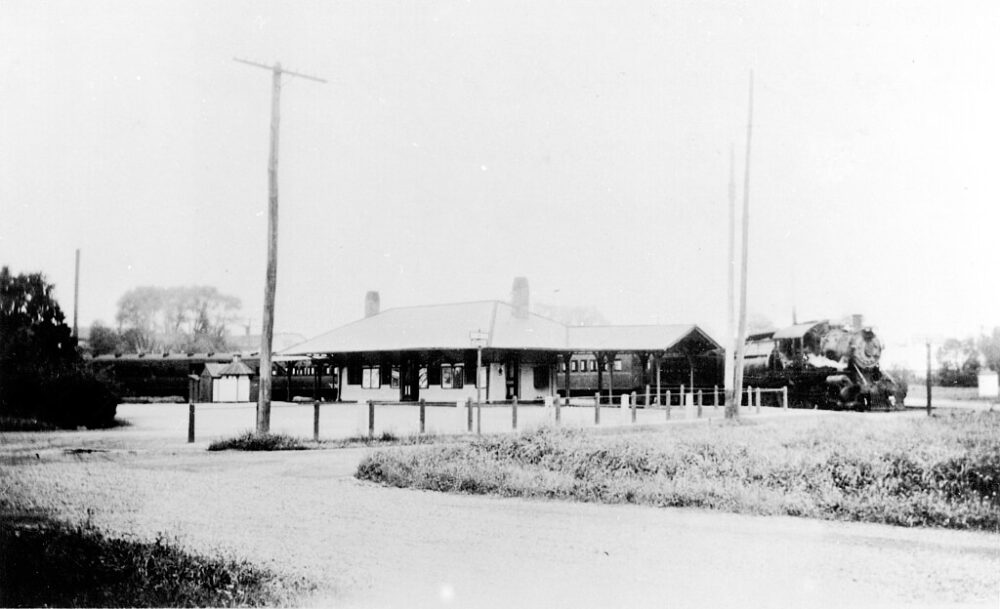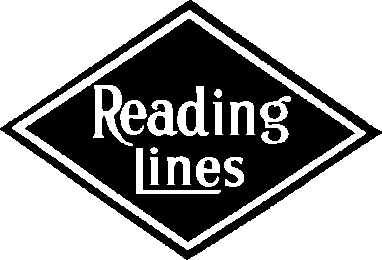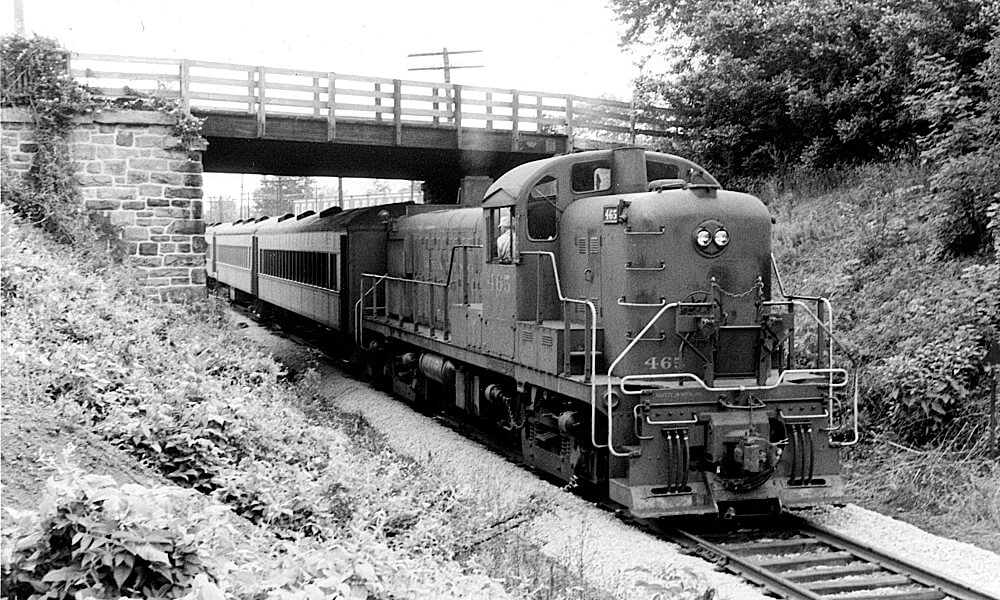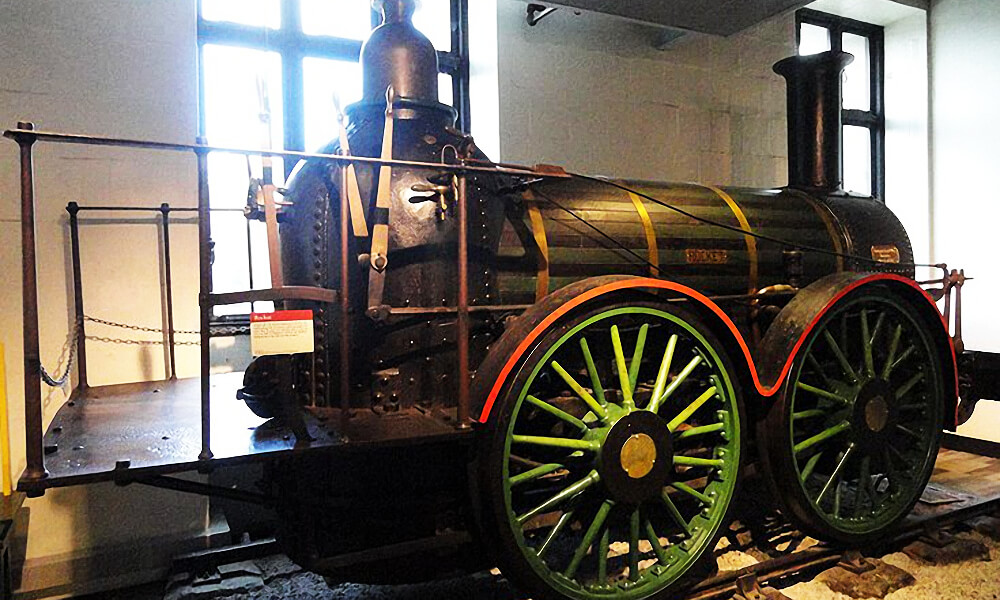Newtown is a borough located in the southern portion of Bucks County, Pennsylvania … an area immediately to the northeast of the city of Philadelphia and bordering the Delaware River. Train service came to Newtown in 1878, when the Philadelphia, Newtown and New York Railroad completed construction. Initially under control of the Pennsylvania Railroad, not much more than a year later, the Philadelphia & Reading Railroad (P&R RR) would lease and take over the line and operate it for most of the next century. (Historic note: the P&R RR was one of the nation’s earliest, having been chartered in 1833 and begun actual rail operations in 1842.)
My connection to the community and the railroad began in 1935. My home, for the first two years of my life, was in a house situated just a couple of blocks from the Newtown station. My other connection to this line is through my Grandfather Taylor, who was a passenger conductor. He worked for the Reading Company for many years, working mostly on the Newtown Branch. Sad to say, he passed away in 1941 before I was old enough to really know him.
Years later, my mother would tell stories about how she could hear during overnight hours and on weekends, the sounds of the steam locomotives being kept ready and expelling excess steam every little while.
These funny looking locomotives are known as “camelbacks,” because the engineer’s cab more or less sits astride the giant boiler — I wrote about them some years ago in this Musings post, yet if you’d like to know more about them, you’ll find it at Camelback locomotive on Wikipedia.
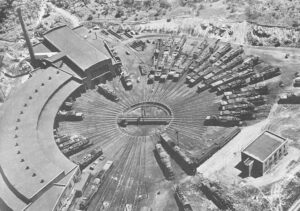
As you see in the above 1933 photo, a camelback locomotive is connected to a set of passenger coaches parked at the Newtown station and another sitting on an adjacent track. This station was built in 1891, replacing the original station located a few hundred feet to the south. That original setup also included a turntable for reversing the direction of the locomotives.
However, in 1901, after realizing that while occupying more land, installing a wye (pronounced “Y”) which looks like a letter Y with a crossbar located part way up the forks. You can see on the below 1944 map of greater Newtown, the wye is the triangular-shaped image sitting adjacent to where the pointer shows the location of the Newtown station. The locomotive is driven up the right fork, backs across the bridge, then comes down the other fork headed in the opposite direction. Replacing the turntable would save on the cost of an operator plus greatly reduce maintenance expense.
Once the locomotive maneuvers through the wye and is headed south, it is ready to begin its run to the Reading Terminal in center city Philadelphia. Also noted on the map with an arrow is the location of the passenger coach storage yard — I found no records as to when this yard was constructed, but assume it dates back to about the same time as the building of the wye in the early 1900s.
Looking at this map and wondering where in the borough of Newtown was all this located, the station was at the northeast corner of South Lincoln Avenue and Penn Street. The cross street at the top of the wye is Centre Avenue.
Yes, there was some freight on this line. If I remember correctly from my younger years driving through Newtown, the track shown on the map that goes straight up through and beyond the middle of the wye was to serve a lumber and/or coal yard. This also goes for the sidetrack which bears off to the left just below what is labeled on the map as Sterling Street.
Not much would change on the Newtown Branch of the Reading Railroad — other than possibly the frequency and schedules of trains — up until the beginning of the 1950s. In Part Two of this story, we’ll look at the rest of the route leading to and from Newtown, with a focus on the changes which have transpired since 1950. I’ll include more photos and an inter-active version of the route map shown at the top of this page.
Before I close … let’s wrap up the Reading’s corporate history up through this period:
In 1925, following a government-ordered separation of the railroad from other corporate interests, the railroad became simply the Reading Company. At this time, the Company itself only owned a small percentage of the miles of track it operated. It controlled, as noted above, through “leases” a network of two dozen small railroads, all interconnected to make up what became known as the “Reading Lines.” As part of the re-structuring, half of these were absorbed into the parent company.
In case you live outside of the area, note that “Reading” — the name of the Pennsylvania city, the railroad, and yes it’s the same railroad you find on the Monopoly game board — is pronounced “Redding.”
Finally, in 1945, the remainder of the leases were acquired and brought under ownership of the Reading Company itself.
NOTE: Much credit must go to members of the Newtown Historic Association for assistance in going through their archives, which yielded many of the photos displayed here. Special thanks to member Fred Moore for additional research, including a number of maps, especially the one above for the track layout in Newtown and the blue location pointers.

